Elevating Voices: Visualizing Social Justice Through Art
A series of art that recognizes the need for and facilitates discussions around the complexities of racial and social justice while elevating and empowering the voices of underrepresented populations and groups. After two open calls to artists, there are currently 11 installations in the collection.
The series was made possible through the generosity of our alumni, donors, funding from the John N. Chester Estate Endowment Fund and Dr. Barry Ackerson, Professor Emeritus
Installment #1: "Year 401"
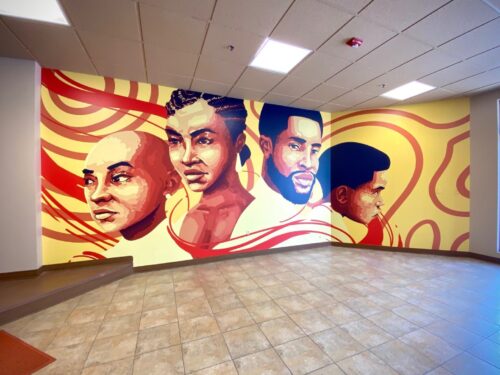
Keenan Dailey:
“I’m an afrofuturist artist and designer that hails from the south side of Peoria IL. I was raised by a single mother who worked as a children’s probation officer, court-appointed special advocate, case worker and DCFS investigator. While during her professional life she would serve as an advocate for children in her private life she raised me through cancer, debt, eviction, and the loss of my grandparents who acted as surrogate parental figures in the place of my own father, all while prioritizing my happiness and protecting my innocence. When I think of social work my most immediate example is my mother and her service as the embodiment of resilience and empathy.
During times of immense adversity it is our responsibility as human beings to be empathetically responsive to voices that cry out in pain as they are representative of parts of our own self, It is our responsibility to be resilient against forces that would maintain the status quo, and It is our responsibility to dismantle every system, every institution born and rooted in the oppression of disenfranchised and marginalized peoples.”

Installment #2: "Waskonedoyen"
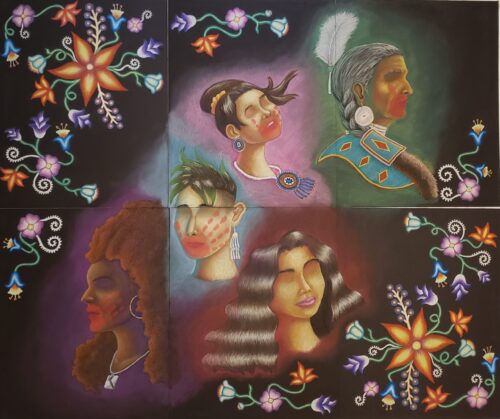
Monica Rickert-Bolter
48″ x 40″ | Dry pastels on black artboard
“Waskonedoyen (was cone nuh doe yin) is the Potawatomi word for “flowers.” They are delicate, vibrant, lush, and resilient, similar to those who suffer from abusive relationships. Four out of five Indigenous/Native womxn have experienced domestic violence, and this dangerous epidemic is known as Missing and Murdered Indigenous Womxn, Girls and Two-Spirit (MMIWG2S). Indigenous womxn have built awareness by putting a red handprint across their mouths for the victims and survivors.
In this piece, I purposefully left the eyes off of the individuals to reference their anonymity. The represented individuals are of various age groups and mixed Native identities. As a woman who has experienced sexual abuse on multiple levels, I want this artwork to show that these experiences do not have to define us. Despite the obscurity and bleakness of these situations, there is still beauty and hope to be found through our shared awareness.”

Installment #3: "Treasure, Touch, Prayer, Home"
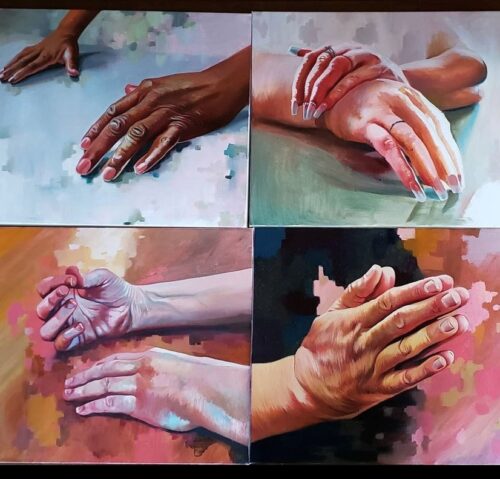
Kimberly Burnett
“I am a Milwaukee artist and illustrator. I have been drawing and painting since I was two, and art has always been my passion. I primarily work with oils and charcoal. My love of oils began as a child, when I studied the works of the Old Masters. I knew that I wanted to work with oils, after seeing what could potentially be accomplished with this medium. My passion is to blend my love of arts with social justice issues. I think art is a very powerful tool to use in the fight for justice and equality for everyone.”
Subjects from Milwaukee Rescue Mission:
DORIS- “I really thought I could raise my child on my own and make it,” she says. “But I couldn’t.” After a series of abusive relationships, life became overwhelming for Doris and her 2-year-old son. She lost her job and her home, forcing them to live out of their car. Today Doris is back on her feet and says God has used her experience to prepare her for future ministry with orphans and battered women like herself.
OTIS- After a difficult childhood, Otis fell into a life of alcohol and drugs. “I hit rock bottom so many times I lost count. I failed so many times, I thought that’s all I’d ever be.” But God had other plans. Eventually, Otis embarked on the path to recovery. Today, he is sober, healthy, employed and grateful for his new life.
LANETTE- Reeling from the abuse of one abusive relationship after another, Lanette was at her wit’s end. But it was when she was laid off that she finally hit rock bottom. “I lost my job, my house, my sanity…life was horrible.” Her life was turned upside down—to be turned right side up only when she found healing at MRM’s Joy House, where she is working today to help other women in need of a fresh start.
PATRICK- When his wife unexpectedly left him after ten years of marriage, Patrick’s broken heart led him to fall back into old habits—and “back into the bottle.” He knew he’d hit rock bottom when he was arrested for drunk driving. After 30 days in jail, Patrick had no job, no place to live, and no idea how to emerge from the hole he had dug for himself. But today, through his recovery, Patrick is transformed—healthy, employed and sober for over two years.

Installment #4: "Community ii"
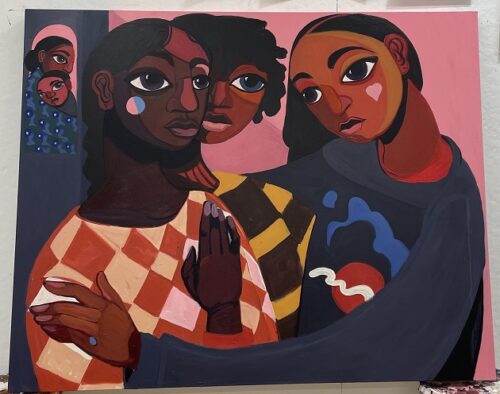
Langston Allston
“The second piece in a series of reflections on what a community looks like, and what it means. Throughout this long period of pandemic and hardship people around me have been investing & benefiting heavily from mutual aid work. It’s been both painful & inspiring to see my community fight to sustain itself, and to see people find that in their moments of need they can turn to those close to them. Ordinary people have taken on the tremendous burden of supporting those most in need, and though much work is left to be done, there is a kernel of hope in the foundation laid over the last two years.”

Installment #5: "Pulse" Neon
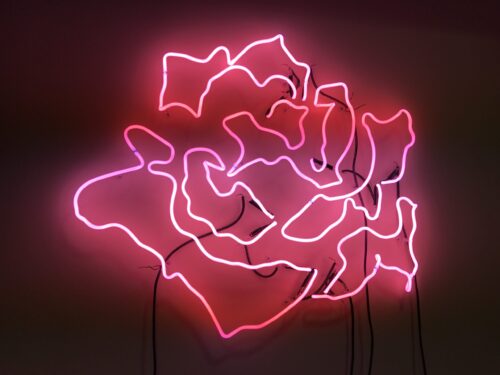
Adam Farcus and Marjorie Inman
Created in argon pink neon, Pulse is an artwork of discrete symbols: a rose, the color, a neon sign, and the title. The title is a reference to the Orlando, Florida, gay nightclub and location of the 2016 shooting where 49 people were murdered and 53 people were physically wounded. Pulse can be understood as a memorial, a flower of mourning, and through its bright pulsing it can also be interpreted as a celebration of life, for the queer and allied community, in opposition to this trauma.
Marjorie Inman is an artist specializing in neon who has exhibited her artworks across the United States. Adam Farcus is an artist and teacher who creates artworks about the emotional ramifications of social injustice and climate change.

Installment #6: "El Apoyo"
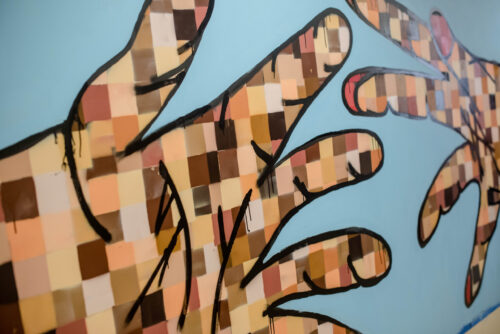
Cesar Ortiz
“El Apoyo was designed in order to shine a light on the Latino/a/x community, specifically on how different we all look from one another. However, it also dives into the aspect of how there is always someone there to help you. When directly translated, “El Apoyo” translates to “the support”. Within the Latinx culture, there is a very big significance around family and helping those in your community. Although many of us differ in the way we look, el apoyo that we give each other remains the same across all Latin American countries.
The symbol in the top left is supposed to represent the 7 values of Social Workers. From the beginning, since I got my inspiration from looking at Loteria cards for a connection back to Latino heritage, I thought that having the 7 in the corner would be a good touch because it mimics the game with having a signal number per card but also to have the hidden message of the 7 values of social workers and to remind people when they see it why they became social workers. The symbol in the bottom right is an icon of an astronaut helmet that represents me as an artist and has a connection to my artist name and the inspiration and ideas behind it.”

Installment #7: "Displacement"
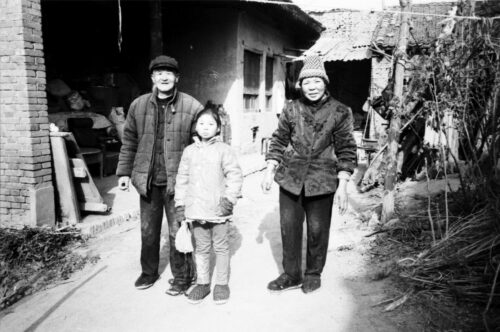
Kang Sun
“As part of a larger ethnographic research project that covers Chinese migrant workers and their left-behind family members’ living conditions, Displacement shows the lifestyle changes of the elderly and the children of rural North China in 2014. As of 2019, the estimated number of migrant workers in China was 290.77 million, 20.7 % of China’s total population (China Labor Bulletin, 2020). The left-behind family members are usually the elderly, the young, and the people who are unwilling or unfit for working in the industrial and service sectors. While studies have mainly focused on the health, mental health, and economic disparities of the left-behind elderly and children, this photographic project shows the elderly’s everyday experiences in an environment changed by the largest scale of internal migration in China and worldwide.”
There are 12 images in this installment.

Installment #8: "Apollo and Hyacinth"
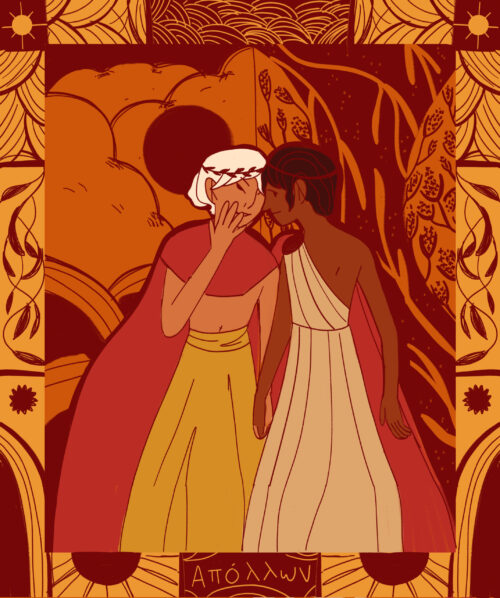
Grey Sherwin
“This piece focuses on whitewashing and LGBT+ erasure in Western media. This mural represents the story of Apollo and Hyacinth. Their story was once one of the most popular love stories in mythology; however, over time it lost gravity in Western advancement. The story defied standards of heterosexuality and European beauty, so it was cast aside through erasure. As a white-passing, AFAB, queer person of color, I have dealt with these brands of erasure all of my life and found that their story resonates with my position in the world. I am often forced into incorrect labels for the sake of uniformity. The treatment of Apollo’s narrative over the ages demonstrates how quick society is to strip away details and conform to an uncomfortable ‘norm’. I think many can identify with this feeling of being out of place and resurrecting this story helps to bring these issues to light.”

Installment #9: "Unseen"
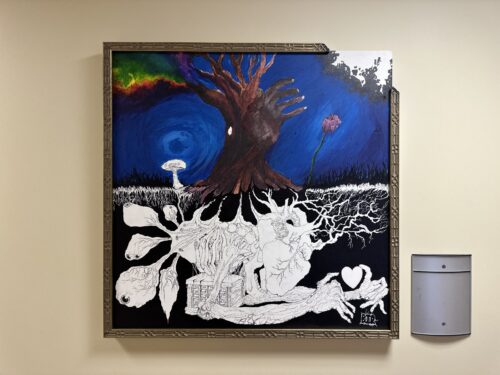
Benjamin Roughton
“I am an artist with ADHD and epilepsy, creating representations of the brain and the mind through visual artistic mediums. When I was in 6th grade, I had my first seizure. I was diagnosed with epilepsy, a condition of the brain resulting in seizures, both physical and absent, which greatly delayed my progression in school and led to many personal hurdles down the road. Creating art has always been my main outlet for emotional expression, both physically and mentally. Throughout my educational journey, I have mastered concepts in classes but have struggled to demonstrate my knowledge and understanding on exams, a familiar situation for many with ADHD. The “ADHD Tax” can discourage people who feel they are giving their all but see those around them excelling without the same delays or burnout. Such extensive mental fatigue over long periods profoundly affects a person’s psyche and feelings of self- worth. This piece represents the work, struggle, burnout, and repetition of that cycle that I feel when I’m halfway through a semester and trying to maintain my grades while balancing the rest of my life and the knowledge of the changing world around me. While I have fears, this piece is meant to depict my triumphs over the mental and physical struggles shared by so many with neurodivergence, so many people you would not expect, with accomplishments even more impressive than this painting, who were not afraid of reaching beyond their comfort zones. This piece is dedicated to all those who struggle with the unseen challenges of ADHD, epilepsy, and other neurodivergence. While your struggles are real, so is your capacity for greatness.”

Installment #10: "Residents"
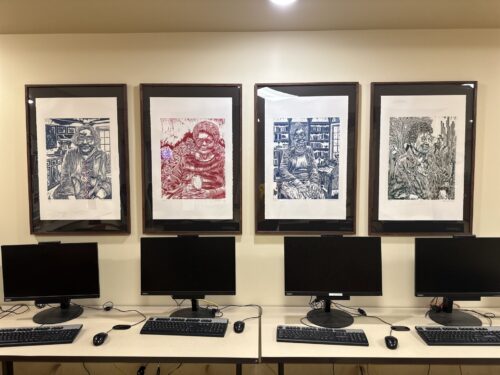
Emma DeValk
“Champaign-Urbana is a bustling city filled with scholarship, families, and students. Here, hundreds of groups merge as one. Yet, there are hidden communities, including those in residential living facilities, whether for independent living or intensive care.
Residential living facilities provide autonomy for those wishing to live independently and can also lift responsibilities from family members for individuals with intensive care requirements. Yet, these communities often remain socially isolated, with no regular connection to the local community besides what visiting family members can provide. This social isolation far too often leads to inadequate care and neglect.
A residential home does not remove familial bonds; it changes them. Many families cannot visit their loved ones every day. An inability to visit and advocate for your family member in a facility should not preclude them from receiving the same quality of care as others who regularly receive visitors.
Taking the time to connect and learn from those older than us is essential; multigenerational relationships present a cyclical pattern of love, care, and support among each member, regardless of whether DNA is shared. Residential homes are filled with people with profound life experience, wisdom, grace, and more stories than thought possible. Take the time to create and foster connections, and you will be amazed at what you learn.
I hope this collection of woodcuts inspires commitment to inclusion, dedication to compassionate care, devotion to recognizing elders as equal members of our community, and strengthening our own intergenerational bonds.”

Installment #11: "Amenah"
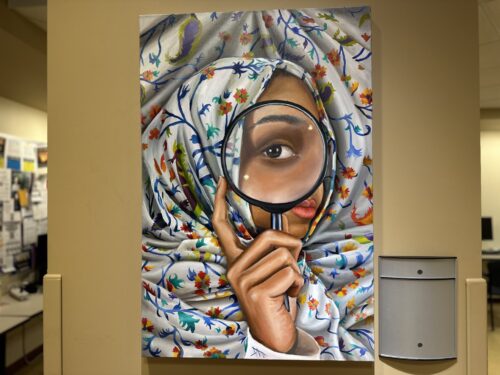
Salma Nasreldin Abdelaziz
“Amenah is a 16-year-old first-year student at Parkland College. She is a young Muslim woman of color, representing three minorities in one. She faces discrimination on many different levels. Amenah usually wears a black scarf, so she might somehow blend in with the crowd, but she never does. Wearing a hijab sometimes feels like wearing a flag over your head that reveals so much about you.
Being a Muslim Hijabi woman of color myself, I share the impression of other women wearing the hijab as they feel watched by many spectators wondering which of the known stereotypes will fit the fabric-draped mold. The most common judgment passed is “She must be oppressed!”. While that is unfortunately the case in other countries, wearing a hijab in the United States symbolizes empowerment. We wear it to identify with our faith proudly.
Yet, when it’s time to be included in active societal roles, we are easily disregarded, as if of lesser capabilities or value. Suddenly, we are unseen.
Even though the young lady’s portrait is the focal point in the painting, the negative area consists of very vibrant, eye-catching colored scarves that grab the viewer’s attention. Her hand offers a magnifying lens, hoping she can be better seen. The lens, however, hides a great portion of the face in distortion, reinforcing the concept. Ultimately, what will you, “the viewer,” choose to see?
I hope this painting becomes an empowering piece for all women who relate to it and a good starting point for discussing preconceived ideas our society shares.”
